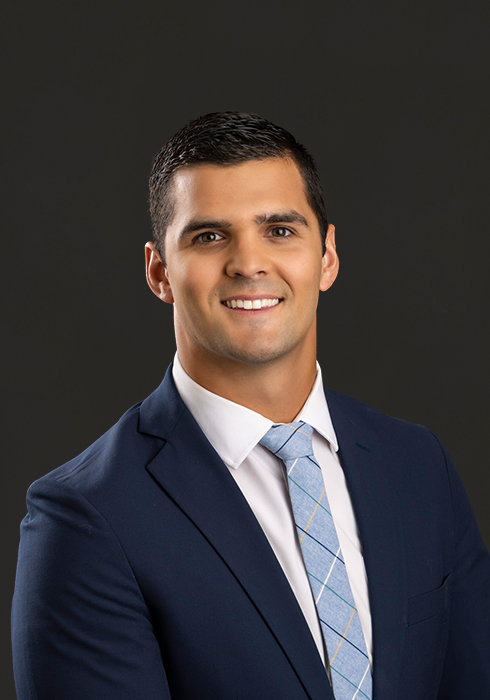Insight Foundations of Special Education – Key Laws, Rights, and Responsibilities
By Ryan J. Spencer,
As we begin this new year, I wanted to provide each of you a series of blogs that will become a Special Education Law 101, so to speak. Each month this year, I will address a fundamental principal of special education that will provide you with enough information to continue to comply with the applicable laws, and continue to improve your compliance with those laws.
A Brief History of Special Education
While special education seems like a no-brainer today, the concept of educating students with disabilities is not that old. Before the mid-20th century, students with disabilities were often excluded from public schools or placed in segregated settings with little access to education. This began to change with the civil rights movement, which highlighted the inequities faced by marginalized groups, including students with disabilities. In 1954, the United States Supreme Court heard the case Brown v. Board of Education. This case, although addressing the issue of racial segregation, set a precedent for challenging segregation and discrimination in public education, paving the way for advocacy on behalf of students with disabilities.
In 1975, Congress passed the Education for All Handicapped Children Act (“EAHCA”). This act’s name was changed to the Individuals with Disabilities Education Act (“IDEA”) in 1990. This law guaranteed a free and appropriate public education (“FAPE”) to students with disabilities and emphasized the importance of individualized services and parental involvement. The IDEA has been amended several times since its inception, expanding its scope and strengthening its protections to students with disabilities.
Implementation of the IDEA
The IDEA ensures that students with disabilities receive equitable access to education through six core principles (all of which will be covered in much greater detail in subsequent newsletters):
- Free and Appropriate Public Education;
- Appropriate Evaluation;
- Individualized Education Programs (“IEP”);
- Least Restrictive Environment (“LRE”);
- Parent Participation; and
- Procedural Safeguards
Schools are required to identify, evaluate, and serve students with qualifying disabilities, providing the necessary supports and services to help them succeed academically and functionally.
Proper implementation of the IDEA requires a collaborative effort between educators, administrators, specialists, and families. Regular training and adherence to legal requirements are essential to maintaining compliance and delivering appropriate services and education to students.
Court Cases and Their Impact
Board of Education v. Rowley
As with all statutes and laws, lawsuits are filed to interpret the meaning behind the statutes and determine how to comply with them. One of the seminal cases was Board of Education v. Rowley. The United States Supreme Court heard this case in 1982 and it was the first case seeking an interpretation of FAPE under the IDEA.
This case involved a deaf student whose parents requested a sign language interpreter to support her education. The school argued that the student was performing well without an interpreter and denied the request. The Supreme Court ruled in favor of the school, stating that the IDEA does not require that the school provide the “best” possible education, but rather an education that is “reasonably calculated to enable the child to receive educational benefits.”
The decision established a critical standard for FAPE, emphasizing that schools are not obligated to maximize a student’s potential but must provide meaningful access to education. While some viewed the ruling as limiting the scope of the IDEA, it also clarified schools’ responsibilities and set a benchmark for determining whether FAPE is being met.
Endrew F. v. Douglas County School District
In 2017, the Supreme Court heard another case which ultimately redefined what constitutes a Free Appropriate Public Education under the IDEA, building on the previous Rowley standard. In Endrew F. v. Douglas County School District, the Supreme Court heard a case involving a student, Endrew, with autism and ADHD. Endrew showed little progress under his existing IEP. His parents placed him in a private school and argued that the district’s IEP failed to provide him with a FAPE. The Court unanimously ruled in favor of Endrew, raising the standard that was set in the Rowley case. The Court held that schools must now provide an IEP that is “reasonably calculated to enable a child to make progress appropriate in light of the child’s circumstances.” This decision clarified and elevated the standard set in Rowley, which required only “some educational benefit.” Unlike the minimal progress deemed acceptable in Rowley, Endrew F. emphasized the need for “appropriately ambitious” goals, ensuring students receive an education that allows for meaningful, measurable progress tailored to their individual needs.
Why This Matters
Understanding the historical development and scope of special education, the implementation of the IDEA, and the impact of cases like Rowley and Endrew F., allows educators and administrators appreciate the broader context of their work. These principles are more than legal mandates—they represent a commitment to equity and inclusion for all students.
Ultimately, special education is about creating opportunities and breaking down barriers. By upholding the IDEA’s principles, educators and administrators can ensure that every student, regardless of their abilities, has the tools, support, and environment necessary to thrive.
As always, if you would like to have a newsletter on a specific topic or issue, please contact me by email or phone.
This article is provided by Hawley Troxell Ennis & Hawley LLP for educational and information purposes only. It is intended to notify our clients and friends of certain events or issues. It is not intended to be, nor should it be, used as a substitute for legal advice regarding specific factual circumstances.
